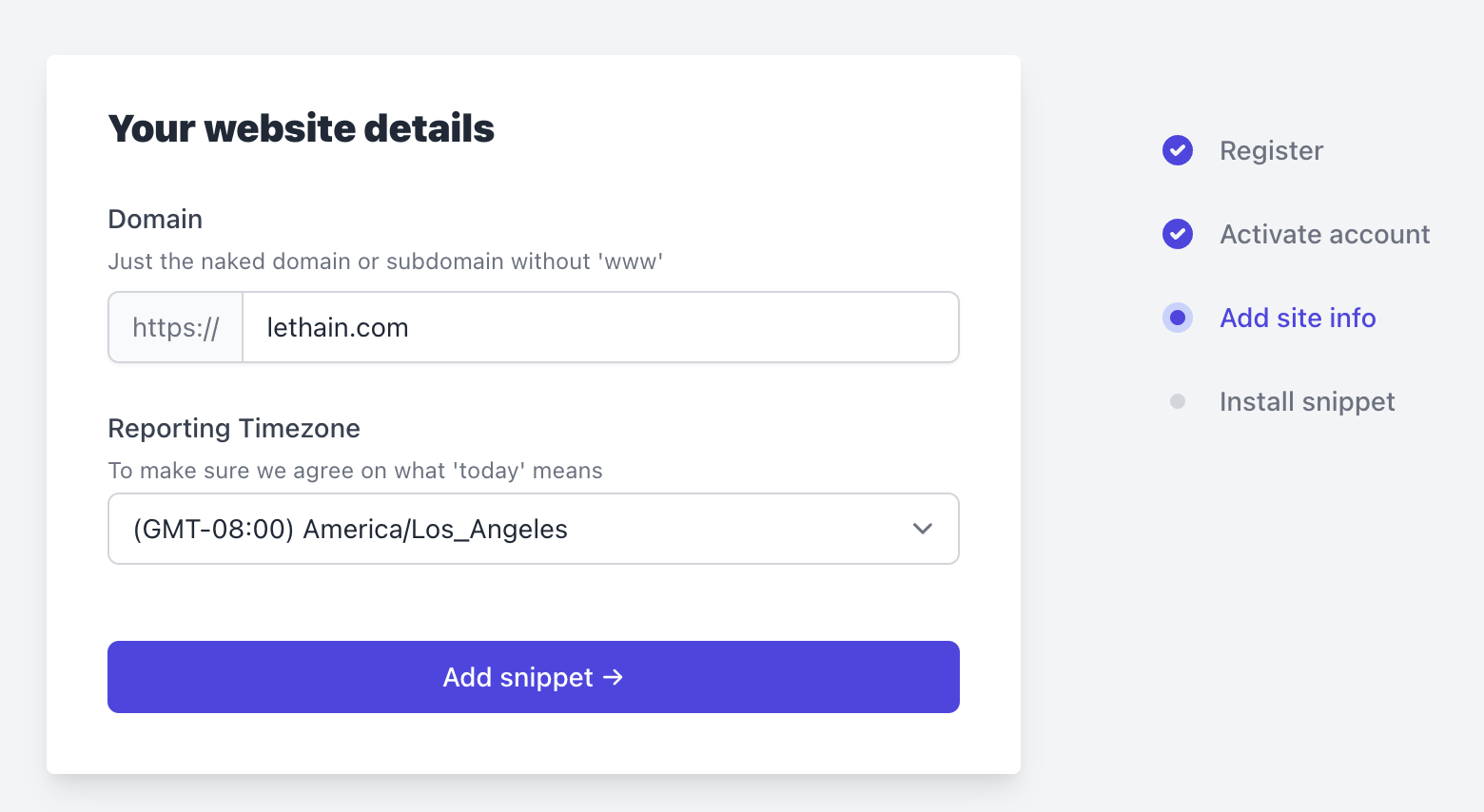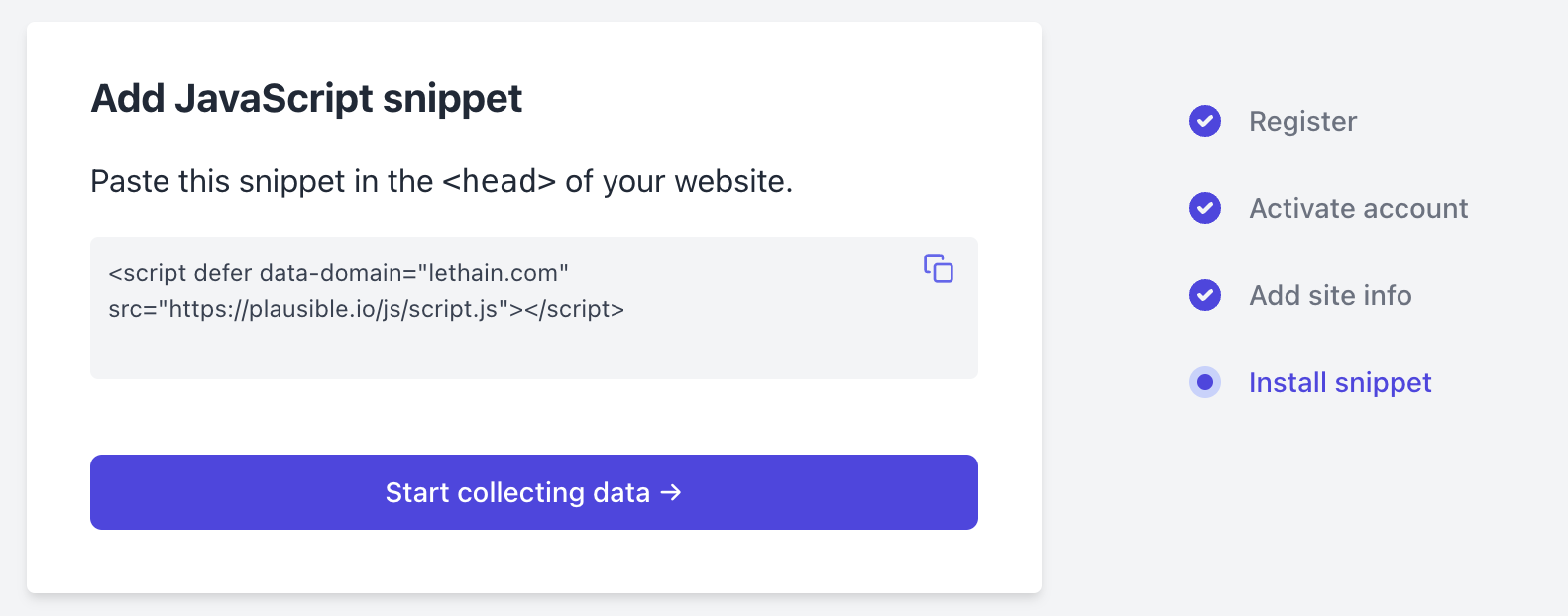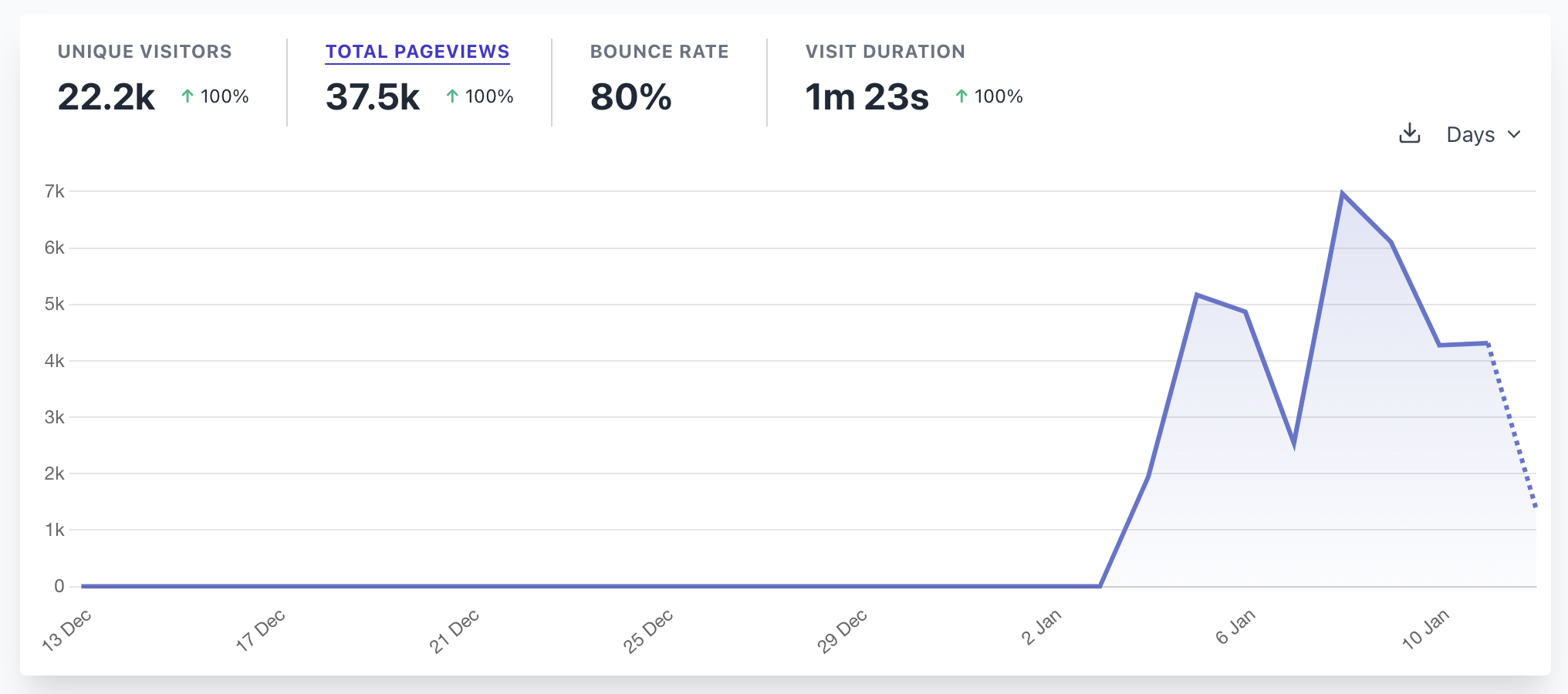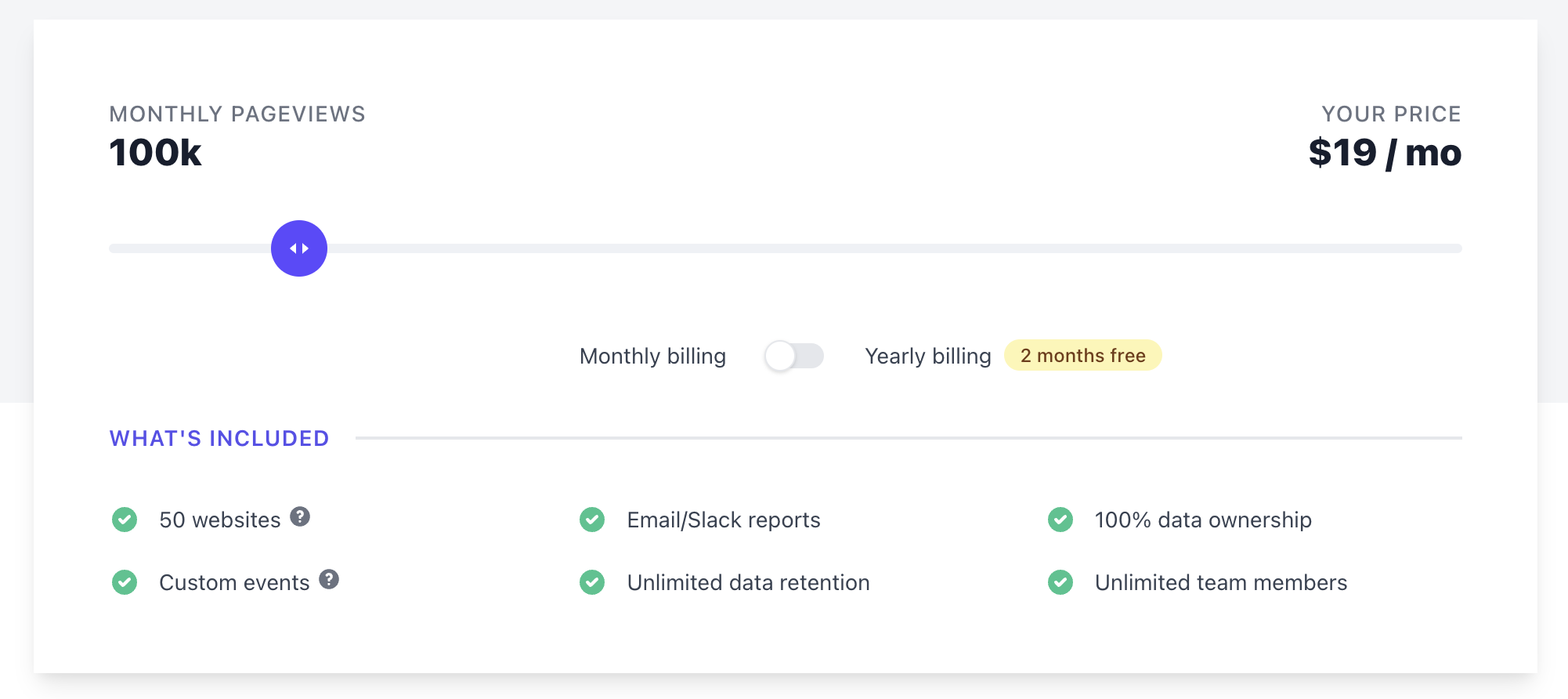Trying Plausible.
I’ve been wanting to spend some time trying out recent developer and infrastructure tooling, starting with taking Tailscale for a spin (it’s quite nice). Next, I’ve been thinking about replacing Google Analytics on this blog for some time, and decided to try out Plausible.io as a replacement.
For the record, I don’t have any profound gripes with Google Analytics, rather I’d say that I’m profoundly grateful to GA. It’s a tool that I’ve greatly benefitted from over the past decade, and it hasn’t charged me anything for it! That said, my personal experience is that GA’s user experience has degraded as the friction between consumer privacy (especially in EU) and cookie based analytics have increased. Since the forced move to GA4, I’ve essentially stopped looking at Google Analytics because the default views are less helpful for me, I lost my custom views from GA3, and I’ve found it harder to configure to my liking.
Summary thoughts
Overall, Plausible has a great onboarding experience, is slightly overpriced as a consumer product but underpriced as an enterprise product, and I’ve enjoyed using it. For the time being, I’ve switched off Google Analytics and moved to Plausible, which I imagine reevaluating after a month or two of additional usage. I appreciate the privacy-forward approach here that should avoid having to migrate to yet-another analytics service as privacy laws continue to ramp up over the next few years. At this point, I don’t think it’s viable for most businesses to switch over given the inability to connect these analytics to advertising data, and are missing a few core features (SSO, something like SOC2, etc).
Plausible is basically a prediction that Google Analytic’s data-aggregation strategy, and in particular using GA to facilitate increased Google Ads spend, is going to be rendered less efficient by ramping up privacy regulation. This seems like a good thesis to me, and ties into my general thesis that compliance is eating the world. Conversely, I think Plausible could do more to explain why they are great in general, rather than focusing on not being Google Analytics (there are a lot of companies out there that aren’t Google Analytics). I think the reasons are there and fairly compelling (hosted in EU, not venture funded, open-source, etc), and that it’s more of an empphasis issue in marketing than an actual gap. (Although I’d love to see more emphasis on the specific technical solution to tracking.)
I think this is largely a function of the growth model, with Plausible aiming to start down-market with creators and startups. There’s a significant gap between the current offering and what would be needed to successfully pursue scaled companies, particularly integration with advertising (arguably Google Analytic’s most important feature to most companies), US-based compliance regimes (e.g. SOC2) and SSO. It’s possible SSO is hidden somewhere, but I do think it’s a fundamental security feature, and would love to see a security and privacy minded tool offer support. (Their Data Processing Agreemenet is an interesting read.)
Plausible is open source software, meaning that you could theoretically run it yourself. Of course, actually running a high-performance, tuned analytics setup is not necessarily the sort of thing most companies should invest time in, but it does provide an exit if the hosted version became prohibitively high. Altogether, I think this is a pretty smart move, and the AGPLv3 is a good license selection (as they discuss here).
Signup & Onboarding

The signup process starts with enter email and password on first screen, and then confirm your email address.

This is followed by a very short installation screen, instructing me to add a simple
script to my head tag.

My blog uses Hugo, so I updated the partials/head-additions.html to look like this:
{{ if eq (getenv "HUGO_ENV") "production" | or (eq .Site.Params.env "production") }}
<script defer data-domain="lethain.com" src="https://plausible.io/js/script.js"></script>
{{ end }}
Finally, I removed my Google Analytics keys from config.toml, commit the changes, and pushed them out.
Minor onboarding suggestions
Throughout my onboarding and early usage, I had a handful of small ideas of how the experience might be adjusted. Caveats abound: I have not dug into the codebase, these are matters of opinion, etc.
Plausible anchors more on not being cookie-based than it does on what it does instead. As an analytics consumer, and particularly if I was adopting it for a site that had revenue implications (which, blessedly, my blog does not), I would really want to understand how it identifies visitors. I think this could be solved with some messaging (maybe on the page after you’ve installed the event collection script). For the record, their data policy page does a good job of explaining this, I just found it relatively easy to miss until I actively searched for it.
Overall, there is a general positioning tact of being “not Google Analytics” as opposed to being “a specific, good thing.” I’m sure they’d landed here for good reason, but ultimately I think this will be a limiting way to market
I’d love if Plausible offered to walk me through the event collection script. I read through the script, and it’s quite small (and whitespace is preserved, so fairly readable), and I think it would be nice to offer an explanation of what it does for other users. Particularly as Plausible is focused on a more privacy oriented audience, this would help build trust. (I also think this would be pretty quick.)
Analytics
Plausible’s approach to analytics is basically: keep is simple. Quoting some of their marketing copy:
Plausible Analytics is built with simplicity in mind. Anyone can understand all the metrics we present at a glance and without having any training or prior analytics experience. Everything you need to know is on one page.
This approach is consistently implemented, as you can see from looking at their screens.

The overview chart is basic but reasonable, supporting date ranges and four metrics (unique visitors, total pageviews, bounce rate, visit duration).

They additionally show users grouped by source, page, geographic location, and device. Seeing as these are the only pieces of data collected–along with metadata from the request itself that is used to fingerprint the visitor and build sessions–there’s simply not much else that they can show.
Within that constrained scope, I think the UX is quite good. For example, I particularly appreciate that it only takes one click to filter traffic to a single page (or source, or device), making it possible to quickly answer questions like, “Where did traffic for this particular page come from?” This is very doable on Google Analytics, but it’s easier to get to here.
Pricing

Pricing is slightly higher than I’d like for a personal product, but very cheap for an enterprise product. It’s hard to guess how many pageviews a given analytics provider will say I get, but I’m guessing 100 to 200,000k pageviews each month, so roughly $20-$30/month. There’s a 30 day trial, so I should be able to get a sense of actual pricing before making a final purchase decision.
It’s worth noting, that Google Analytics is free because Google gets significant value from the data that Google Analytics provides. There’s a very reasonable argument to be made that it’s worth paying to own exclusive access to your analytics data.
Performance
Without claiming any sort of robustness, my observed latency for Google Analytics was around 120ms to complete, whereas Plausible is closer to 180ms or so. Increased latency makes sense if Plausible is hosting all servers (excluding, presumably, a CDN for the javascript) in the EU as they claim (roughly 90ms roundtrip from US to EU versus <30ms from San Francisco to a nearby Google datacenter). That is with locally cached script, without there’s an additional ~80ms of latency for loading Plausible’s scripts, and a somewhat shorter one for GA. GA is, of course, far more likely to already be cached on any given machine. Altogether, I think it’s fair to say that Plausible is about twice as slow as Google Analytics wrt time to completing the first event on the average website.
Still, even twice as slow isn’t bad at roughly 250ms. In either case, I think this is a reasonable latency given page load isn’t blocked behind it.